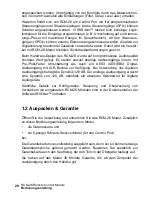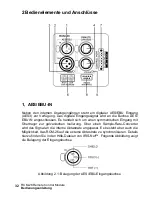
18
RCM-26 Remote Control Module
Owner’s Manual
3 CAN Bus Principles
The network topology used by the CAN bus is based on the so-called “bus or
line topology”, i.e. all participants are connected via a single two-wire cable
(Twisted-Pair cable, shielded or unshielded) with the cabling running from one
participant on the bus to the next, allowing unlimited communication among all
devices. In general, it does not matter if the bus member is a RCM-26, a USB-
CAN converter or another device. Thus, the RCM-26 can be connected at any
place of the CAN bus. In total, up to 100 devices can be connected to one CAN
bus.
The CAN bus has to be terminated with a 120
Ω
terminating resistor at both
ends. If the termination is missing or an improper resistor value is used,
network errors can occur as a signal is reflected on the bus at both bus ends.
Because of the superposition of the reflection with the original signal, the
original signal is blurred. This may result in the loss of data. In order to prevent
or minimize reflections at the bus ends, terminators are used as they "absorb"
the energy of the signal.
Since the CAN interfaces of all EVI Audio appliances are galvanically separated
from the rest of the circuitry, network cabling also carries a common ground
conductor (CAN_GND) ensuring that all CAN-interfaces in the network are
connected to a common ground potential.
By using a CAN bus repeater a connection between two independent and self-
contained CAN bus systems can be created. Thus, the following can be
achieved:
•
Increase of the max. number of members
A maximum of 100 devices can be connected to one CAN bus. This number
Illustration 3.1: Bus Topology of the CAN bus
Summary of Contents for RCM-26
Page 1: ...OWNER S MANUAL BEDIENUNGSANLEITUNG MODE D EMPLOI RCM 26 Remote Control Module ...
Page 23: ...BEDIENUNGSANLEITUNG RCM 26 Remote Control Module ...
Page 45: ...MODE D EMPLOI RCM 26 Remote Control Module ...
Page 72: ...72 RCM 26 Remote Control Module 4 3 Dimensions Abmessungen ...
Page 73: ...RCM 26 Remote Control Module 73 ...
Page 74: ...Notes ...
Page 75: ...Notes ...















































